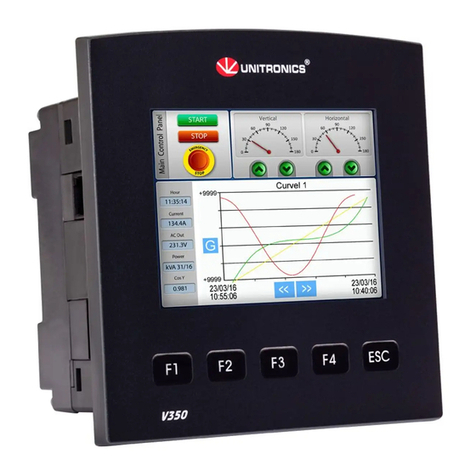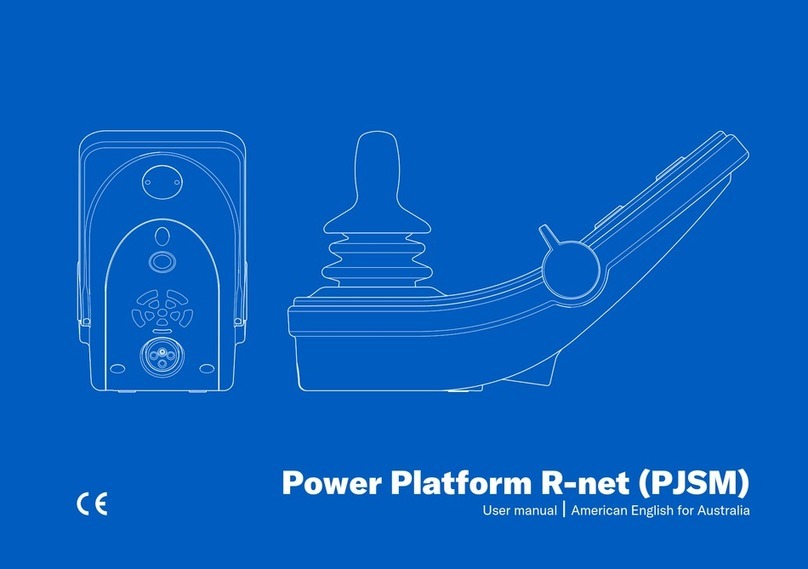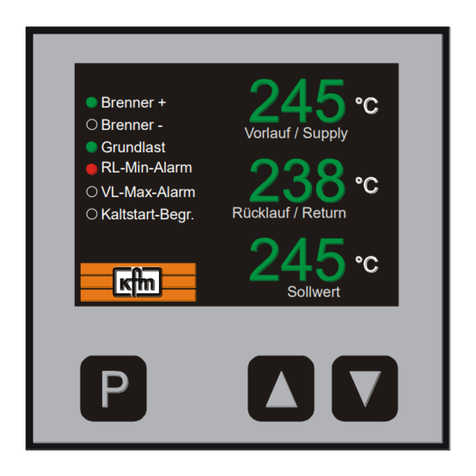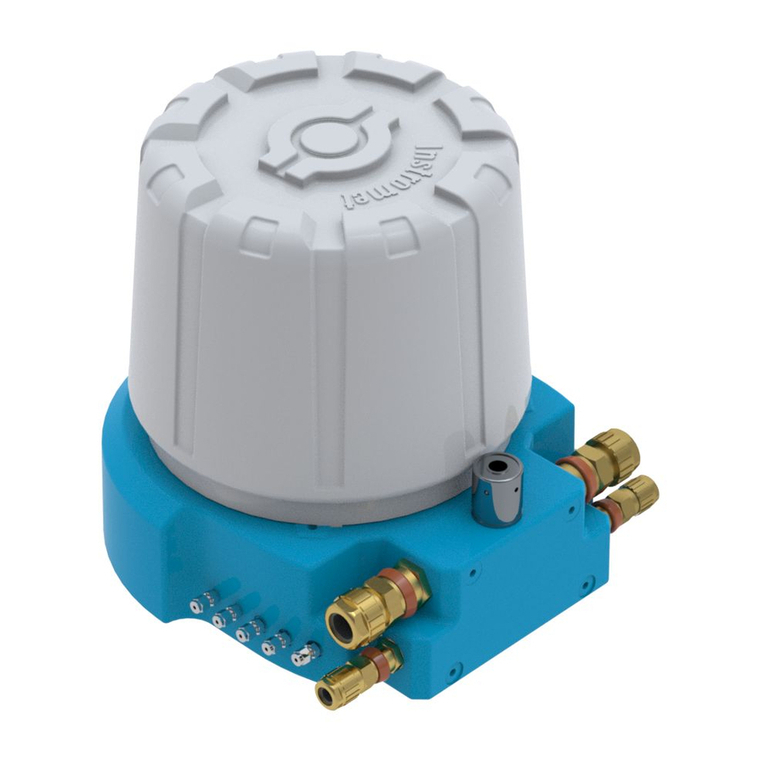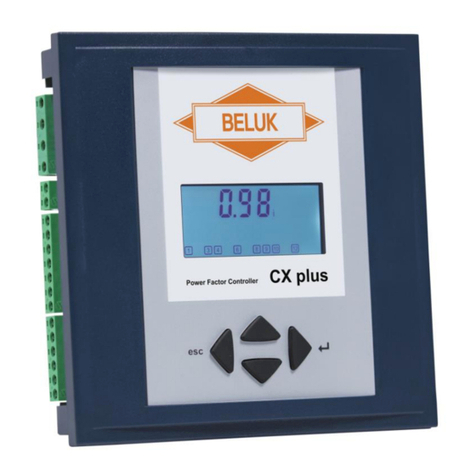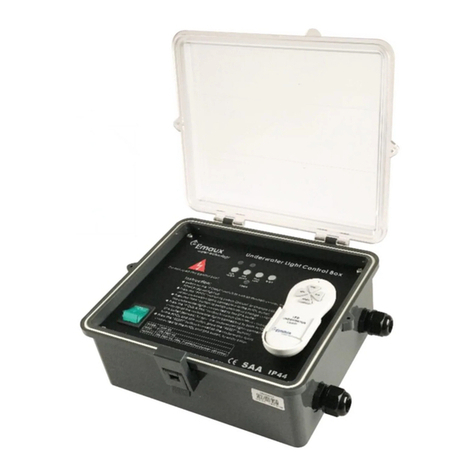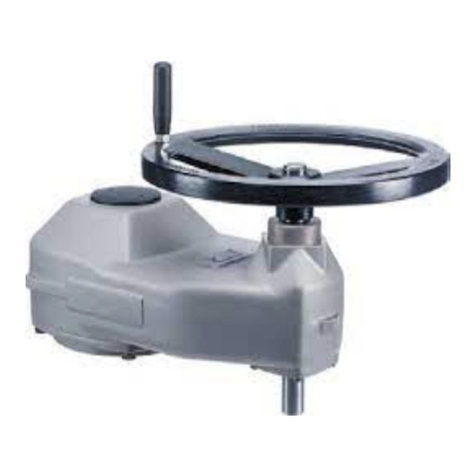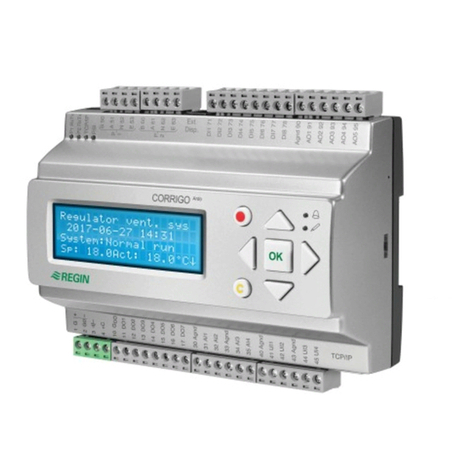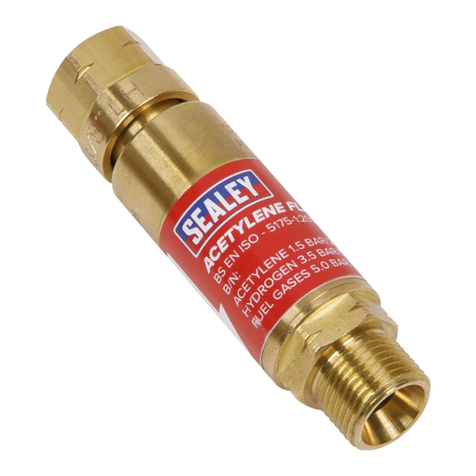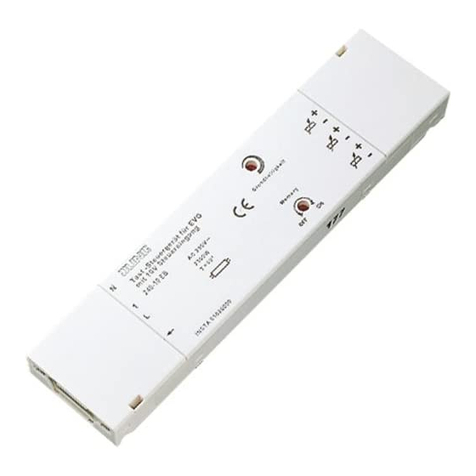FHP AHP 641-224 User manual

1
I/O ZONE 560/583
641-224
641-242
641-237
USERS GUIDE

Hot Gas Re-Heat Valve On/Off:.................................15
THE ZONE CONTROLLER......................4 Modulating Re-Heat Valve:..........................................16
Filter:..............................................................................16
SPECIFICATIONS ................................5
Heating and Cooling – (1 and 2 Compressor Stages): 16
The heating will be enabled whenever:.......................17
CONTROLLER COMPONENTS...............6 The cooling will be enabled whenever: ......................17
LED Indicators..............................................................6
DIP and Rotary Switches...............................................7 Reversing valve:.............................................................17
Jumpers and settings......................................................8
Supplemental Electric Heating Stage: ......................... 17
LONWORKS® CARD OPTION...............9 Discharge Air Temperature: ........................................18
High Discharge Air Temp:..........................................18
WATER TO AIR OPERATION..............10 Low Discharge Air Temp:..........................................18
Discharge Air Sensor Failure:..................................... 18
General Description.......................................................10 Discharge Air Control...................................................18
Key Features and Benefits.............................................10 Single Outside Air Temperature (OAT) Reset: ..........19
Multiple Outside Air Temperature (OAT) Reset:.......19
Inputs ..............................................................................11 Leaving Water Temperature:.......................................20
Outputs............................................................................11 High Leaving Water Temp:........................................20
Low Leaving Water Temp:......................................... 20
Leaving Water Sensor Failure: ...................................20
Control & Status Parameters and Alarms...................11
Control.........................................................................11
Status...........................................................................12 WATER TO WATER OPERATION........25
Alarms.........................................................................12
GENERAL DESCRIPTION...................27
SEQUENCE OF OPERATION ...............13 Inputs .......................................................................... 27
Outputs........................................................................27
Run Conditions: .............................................................13
Occupied Mode ...........................................................13
Unoccupied Mode (night setback):..............................13 CONTROL & STATUS PARAMETERS
AND ALARMS.....................................28
Zone Temperature .........................................................14 Status and Control....................................................... 28
High Zone Temp: ........................................................14 Alarms ........................................................................28
Low Zone Temp:.........................................................14
Zone Sensor Failure: ...................................................14
SEQUENCE OF OPERATION...............29
Zone Setpoint Adjust:....................................................14
Run Conditions:.............................................................29
Zone Unoccupied Override:..........................................14 Occupied Mode........................................................... 29
Unoccupied Mode (night setback):............................. 29
Freeze Protection: ..........................................................15 Auto Changeover Mode..............................................29
Digital Input Mode......................................................30
Fan:..................................................................................15 BAS Mode..................................................................30
Constant Volume.........................................................15
VAV............................................................................15 Lead - Lag Compressor operation ...............................31
Compressor 1 Runtime:..............................................31
Zone Humidity:..............................................................15 Compressor 2 Runtime:..............................................31
Table of Contents
2

Pump Control (optional)................................................31
Pump Runtime Alarm:.................................................31
Load Water (Entering) Temperature: .........................32
Load High Temp: ........................................................32
Load Low Temp:.........................................................32
Load Sensor Failure: ...................................................32
Source Water (Leaving) Temperature:........................32
Leaving High Temp: ...................................................32
Leaving Low Temp:....................................................32
Leaving Sensor Failure:...............................................32
BACview Termination Detail........................................35
RS-Sensor Termination Detail......................................37
NOTES................................ Error! Bookmark not defined.
NOTES ...........................................................................41
3

The Zone Controller
The Zone control board also known as DDC
and shown in figure 1 is used in most
configure to order applications.
It is BACnet® native which makes it flexible
and easy to integrate into existing Building
Automation Systems (BAS). The main
difference between the 560 and the I/O 583
is the Analog Output (AO) plug enclosed in
figure 1.
The controller is programmed in the factory
with software versions that suit the different
applications FHP offers. User settings such
as the time and test and balance set points
shall be set up during the installation and
commissioning process at the job site.
Figure 1 - Zone Controller
Analog plug enclosed in red box on figure above is only available on Zone I/O 583.
4

Specifications
Power: 24VAC ± 10%, 50-60Hz, 20VA power consumption
(Single Class II 70VA or 100VA option available)
Physical: Rugged plastic housing protects circuitry.
Environmental
Operating Range: 40° to 130°F (-17.8° to 54.4°C); 10 to 90% relative humidity, non-condensing
Digital Outputs: Five digital outputs relay contacts rated at 1A resistive @ 24VAC; configured as dry contact,
normally open.
Universal Inputs: 8 inputs. Inputs 1 and 2 are configurable for 0-5VDC, 10K ohm thermistor,
or dry contact; inputs 3 and 4 support thermistor or dry contact only; inputs 5 and 6 support
thermistor, dry contact, or LogiStat. Inputs 7 and 8 are used for 1-10K adjustment pots or dry
contacts.
Standard Comm Port: 3-pin port configurable for ARC156 (BACnet-over- ARC156) or
Communication EIA-485communications (BACnet MS/TP, Modbus RTU, orN2).
Ports: Rnet Port: 4-pin port for interface with remote mounted BACview6 or RS sensors
Local Access Port: For local communication with a laptop computer running WebCTRL or
for communication with a BACview6.
Status Indication: Visual (LED) status of network communication, running, errors, power, and
all digital outputs
Battery: Lithium 3V coin cell battery, CR2032, provides a minimum of 10,000 hours of
Data retention during power outages
Protection: Surge and transient protection circuitry for power and communications.
Listed by: FCC Part 15 - Subpart B - Class A. Pending listings at the time of publishing
this document: UL 916 (PAZX), cUL C22.2 No. 205-M1983 (PAZX7), CE (1997).
Weight: 0.6 lbs. (0.27 Kg).
Overall
Dimensions: 5-1/16” (width) by 5-11/16” (height) by 1-1/2” (recommended panel depth).
129mm (width) by 144mm (height) by 38mm (recommended panel depth).
Mounting Hole
Dimensions: Two mounting holes center line as at left with 5-9/16” (141mm)
Spacing (height)
5

6
Controller ComponentsController Components
LED IndicatorsLED Indicators
The DDC controller is equipped with three
bank sets of LED that help the user
diagnose problems and or identify normal
operation.
The DDC controller is equipped with three
bank sets of LED that help the user
diagnose problems and or identify normal
operation.
Figure 2 - Network LEDsFigure 2 - Network LEDs
The first bank is located in the upper left
hand corner as shown in the figure 2. They
flash repeatedly when the controller is
communicating with the network and usually
service support refers to them as Rx and Tx.
The first bank is located in the upper left
hand corner as shown in the figure 2. They
flash repeatedly when the controller is
communicating with the network and usually
service support refers to them as Rx and Tx.
The second bank is located on the upper
right hand corner of the controller as shown
in figure 3. The first one from top to bottom
is normally lit (on) while the controller is
powered the second is the heart beat and
will flash during normal operation, the third
LED will remain off and will lit red in case
there is an error in the controller.
The second bank is located on the upper
right hand corner of the controller as shown
in figure 3. The first one from top to bottom
is normally lit (on) while the controller is
powered the second is the heart beat and
will flash during normal operation, the third
LED will remain off and will lit red in case
there is an error in the controller.
Figure 3 - Power LEDs
In addition, when downloading new or
modified versions of software these LEDs
will flash on and off indicating new files are
being written to its non-volatile memory.
In addition, when downloading new or
modified versions of software these LEDs
will flash on and off indicating new files are
being written to its non-volatile memory.

Figure 4 – Digital Output LEDs
The Third Bank of LEDs are located on the
bottom right corner of the controller as
shown on figure 4 (right) and their purpose
is to show the status of individual Digital
Outputs (DO) as they are energized
DIP and Rotary Switches
Two sets of switches can be found on the
controllers, they must be set properly to
allow correct operation of the unit.
The first set are rotary switches, as shown in
figure 5, is located on the left hand corner
near the top and their function is to provide
the controller address it always convenient
to identify the rotary for the tens and the
rotary for the ones as shown in figure 6.
The second set is located on the top left
hand corner of the controller and it is used
for two purposes:
(1) SW1 and SW2 set the baud rate of the
communications port on the controller:
BAUD RATE SW1 SW2
9600 Off Off
19.2K Off On
38.4K On Off
76.8K On On
Figure 5 – Controller Address Rotary DIP switch
Figure 6 – Rotary switches
Figure 7 – DIP Switches
(2) SW3 and SW4 enable different
supported protocols on the controller
additional hardware is needed for LonTalk®.
IMPORTANT:
Controllers must be
addressed correctly
for multiple units to
work on a network.
7

8
PROTOCOLS SW3 SW4
BACnet®MS/TP Off Off
N2 On Off
Modbus Off On
Option Card On On
Typical DIP switch for LonTalk® (Option
Card) is shown in figure 8.
Jumpers and settings
Controllers come equipped with a series of
jumpers which allow different types of inputs
to be terminated in a particular point.
Most inputs allow thermistor or dry contact
input devices to be terminated in them,
however IN1 and IN2 can be used as analog
or digital input points and their available
options are as follows:
0-5 VDC Analog Input
Thermistor
Dry Contact
FHP sets most switches in the factory,
however there are certain cases where a
particular sensor is required by the
customer, therefore it is important for the
installer to understand jumper settings and
their relationship with unit configuration and
operation. Figure 9 shows the location of the
jumpers on the controller.
Figure 8 - LonTalk® DIP Settings
EIA-485
BACnet
over ARC156
Figure 9 - Jumper setting for LonTalk® only.
Figure 10 - Jumper Settings
1234
IMPORTANT:
The LonTalk® card
must be installed.
Jumpers set up will be
cover under the jumper
section.
ON

LonWorks® card option
LonWorks® is a network platform that allows any facility or to integrate sub-systems using a
common system architecture and infrastructure.
This platform provides fully open operability of the components within a system or sub-system,
this enables the facility owner to utilize different vendors and still have the capability of
integrating their system into one single server or front end.
The LON card option is available for both controllers 641-224 and 641-242.
The Lon card connects to the option card port as shown in figure 11.
Figure 11 - LonTalk® Card – 641-237
9

Water to Air Operation
General Description
The Heat Pump Factory mounted I/O Zone 560 or 583 DDC Controllers are factory configured
with the Water to Air application program and factory installed in the unit to be job site
configureable to run.
The unit will operate in a 100% stand-alone control mode or connect to a Building Automation
System (BAS) using open protocols BACnet® (ARCNET and MS/TP), Modbus RTU, N2 or
LonWorks® (additional network interface board required for LonWorks® option).
The point mapping to all of these protocols is available in www.fhp-mfg.com and can be pre-set,
so that the protocol and baud rates desired can be easily field-selected and commissioned
without the need for any additional downloads or technical assistance.
The DDC Controller also supports communications to intelligent RS Room sensors and
BACview keypad/display panels.
Key Features and Benefits
I/O point count: 5 Digital outputs and 6 Universal inputs
Powerful high speed microprocessor with 1MB Flash memory and 1MB of battery-backed
RAM
Built-in protocol support: BACnet® (ARCNET and MS/TP), Modbus, N2 and LonWorks®
(additional network interface board required for LonWorks® option)
Built-in local access support: BACview6 keyboard/display and Intelligent RS Room
sensors
On-board lithium battery holds Controller time clock settings
Program archived in non-volatile memory allows unit to be ready after long periods of
power outages.
10

Inputs
RS Room temperature sensor (Rnet)
RS Room temperature sensor Set point adjust (Rnet)
RS Room temperature sensor Occupancy override (Rnet)
Discharge air temperature sensor
Leaving water temperature sensor
Unit Protection module (UPM) Alarm codes (7 safety shutdown alarms)
Unit Filter status (optional)
Unit Enable manual control (optional DI Enable)
Outputs
Unit blower control
Reversing Valve
Cooling Stage 1
Cooling Stage 2 (Comp 2 Circuit or Comp1 Stage 2)
Humidity control output (optional Hot gas re-heat)
Auxiliary/Emergency Heating Stage (optional Electric Heat)
Control & Status Parameters and Alarms
Control
BACview occupancy schedule
System control: Schedule, Manual ON, BAS command or DI Enable
Room temperature occupied cooling/heating set point
Room temperature unoccupied cooling/heating set point
Unit blower control
Reversing valve control
Compressor 1 control
Compressor 2 control (Comp 2 Circuit)
Unit Enable manual control (optional)
Humidity Control ( hot gas re-heat optional)
Auxiliary/Emergency Electric heat output control (optional)
11

Status
Cooling/Heating control status
Cooling/Heating percentage (0-100%)
Room temperature
Discharge air temperature
Leaving water temperature
Changeover temperature
Unit filter status (optional)
Fan-Hours runtime counter (filter replacement indicator)
Fan starts counter
Comp 1 starts counter
Comp 2 starts counter (Comp 2 Circuit)
Alarms
Room temperature high/low differential
Leaving water temperature high/low trip
Discharge air temperature high/low trip
Sensor failure alarm
Unit filter Runtime trip (optional)
Comp 1 Runtime trip
Comp 2 Runtime trip (Comp 2 Circuit)
Freeze Stat sensor UPM alarm (optional)
Low pressure sensor UPM alarm
High pressure sensor UPM alarm
Low pressure sensor UPM alarm (Comp 2 Circuit)
High pressure sensor UPM alarm (Comp 2 Circuit)
Condensate overflow UPM alarm
High/low voltage UPM alarm
12

13
Sequence of Operation
Run Conditions:
The unit will run according to a user definable time schedule, dry contact (physical digital input
number 1), manual ON command from BACview control interface, timed local override from
Zone temperature sensor or via third party front end start command (software point). When
commanded to run the unit will operate in the following modes:
Occupied Mode: The unit will maintain
A 74°F (adj.) Cooling setpoint
A 70°F (adj.) Heating setpoint
Unoccupied Mode (night setback): The unit will maintain
A 90°F (adj.) Cooling setpoint.
A 55°F (adj.) Heating setpoint.
The unit will operate and adjust the setpoints according to the heating and cooling limits which
can be changed by the technical agent during the commissioning process if needed. The factory
default limits are the following:
Occupied Limits:
75 °F Heating High
60 °F heating Low
85 °F Cooling High
65 °F Cooling Low
Unoccupied Limits:
70 °F Heating High
50 °F Heating Low
95 °F Cooling High
80 °F Cooling Low
IMPORTANT: It is important not to overlap these limits on their respective modes (occupied and
unoccupied), overlapping may result in unit cycling between heating and cooling.

Zone Temperature
The occupant will be able to see the zone temperature on the sensor LCD display in addition the
user will be able to see other parameters that have been configured in the controller such as
alarm status, alarm codes, Inputs and outputs status among others.
NOTE: These codes and values vary from version to version for additional information on what
is available on the RS-Pro sensor please check its commissioning BACview manual in our web
site www.fhp-mfg.com.
Alarms will be provided as follows:
High Zone Temp: If the zone temperature is greater than the cooling setpoint plus a user
definable amount (adj.), the factory default for this amount is 10.
Low Zone Temp: If the zone temperature is less than the heating setpoint minus a user
definable amount (adj.) the factory default for this amount is 10.
Zone Sensor Failure: If Zone sensor outside of normal operating limits, typically produced by a
wire failure between the sensor and the controller.
Zone Setpoint Adjust:
The occupant will be able to adjust the zone temperature heating and cooling setpoints at the
zone sensor (when RS Plus or RS Pro sensors are used). Zone sensor adjustment will allow for
+/-5°F of adjustment. If RS Standard sensor is used, then setpoint adjustments must be done at
the BACview keyboard/display or through BAS third party control.
Zone Unoccupied Override:
A timed local override control will allow an occupant to override the schedule and place the unit
into an occupied mode for an adjustable period of time (presets at 1-2-4 or 6 hours). At the
expiration of this time, control of the unit will automatically return to the software schedule or
third party control.
14

Freeze Protection:
The unit shall shut down and generate an alarm upon receiving a freezestat status.
Fan:
Constant Volume
In the occupied mode, the fan shall run continuously or cycle with the compressor(s) depending
on fan mode settings. In the unoccupied mode, fan cycles as required for unoccupied heating
and cooling setpoints while in night setback.
Variable Frequency Drive
On units equipped with a factory or field installed Variable Frequency Drive (VFD) the controller
will command the VFD signal to maintain a particular ( User Definable) value of Static pressure,
this is typical on VAV applications with discharge air control requirements.
Zone Humidity:
If specified the controller has the capability to monitor and control the zone humidity via the hot
gas re-heat option.
There are two hardware options for humidity control:
Hot Gas Re-Heat Valve On/Off: This valve is controlled based on a 60% relative humidity
setpoint (User Definable) and will only be energized once the temperature set points are
satisfied, this valve is a two position valve and therefore is an on/off operation.
Alarms will be provided as follows:
High Zone Humidity: If the zone humidity is greater than 75% (adj.).
Low Zone Humidity: If the zone humidity is less than 35% (adj.).
The controller prioritizes the sensible load and therefore if temperature rises or decreases
during the re-heat operation the controller will switch to heating or cooling operation.
15

Modulating Re-Heat Valve:
This valve is an analog device and has the capability to modulate the amount of hot gas that is
allowed through the re-heat coil, thus allowing control of the discharge air temperature to a user
defined setpoint.
The operation is similar to the on/off control except once the space temperature is satisfied the
controller will monitor the space humidity if the value is greater than the setpoint the controller
will modulate the valve to meet a particular a desired discharge air temperature on zone
applications only.
A typical application of modulating re heat valves can be seen on Discharge Air Control systems
where the unit is required to maintain a particular value of supply air temperature (neutral air).
For this particular type of units the unit will only discharge air to meet the specific setpoint, this
operation is done via a reverse acting PID closed loop, and its sequence of operation is
described in detail under the Discharge air section of this document.
Filter:
Based on fan runtime, a filter alarm message is generated after a user definable amount (adj.
factory default 2000 hours) or can be enabled by an optional differential pressure switch.
Heating and Cooling – (1 and 2 Compressor Stages):
The controller will measure the zone temperature and stage the compressor(s) to maintain its
setpoint. To prevent short cycling, there will be a 5 minute delay between compressor stages (if
equipped with 2 compressors). Additionally, there will be a 1 minute delay when transitioning
between heat and cool modes. The compressor will run subject to internal safeties and controls
provided by UPM board.
16

The heating will be enabled whenever:
The fan output is on.
AND the reversing valve is in heat mode (de-energized).
The cooling will be enabled whenever:
The fan output is on.
AND the reversing valve is in cool mode (energized).
Reversing valve:
The reversing valve is energized on a call for cooling and will remain energized until a call for
heating. Upon a call for heating, the reversing valve is de-energized and remains de-energized
until a call for cooling or a call for re-heat on units with humidity (on/off) control option. The
compressor will be disabled and remain off for 10sec after the reversing valve has changed
position.
Alarms will be provided as follows:
Compressor 1 Runtime Exceeded: Compressor 1 runtime exceeds a user definable limit (adj.).
Compressor 2 Runtime Exceeded: Compressor 2 runtime exceeds a user definable limit (adj.).
Supplemental Electric Heating Stage:
The controller will measure the zone temperature and stage the heating to maintain its heating
setpoint should the compressors not meet the heating demand. To prevent short cycling, the
stage will have a 5 minute delay allowing compressor stages to meet the needs of the space.
The heating will be enabled whenever:
The heat pump is in heating mode.
AND the zone temperature is below heating setpoint.
AND the fan is on.
17

The controller will only allow supplemental heating if the unit is configured to allow this
operation, units equipped with hot gas re heat valves or damper control enable will not have
supplemental electric heat functionality.
Discharge Air Temperature:
The controller will monitor the discharge air temperature to be located at discharge side of coil. If
the supplemental heating is installed then sensor will be in the discharge side of heating coil.
Alarms will be provided as follows:
High Discharge Air Temp: If unit running in cool mode and the discharge air temperature is
greater than 70°F (adj.).
Low Discharge Air Temp: If unit running in heat mode and the discharge air temperature is
less than 75°F (adj.).
Discharge Air Sensor Failure: If discharge air sensor outside of normal operating limits.
Discharge Air Control
On units with factory mounted modulating re-heat valves the controller will operate the unit to
maintain a particular discharge temperature setpoint. The discharge air temperature sensor
(DATS) will be located at discharge side of coil preferable 3/4 downstream of the total length of
the duct work.
The controller can operate on single or Multiple Outside Air Temperature Reset, the controller
will monitor the value of the Outside Air temperature via a BACnet point or via a physical point
terminated in one of the controllers available inputs. The controller will stage the unit’s
compressors and modulate the re-heat valve mode to maintain the Discharge Air Setpoint (User
adjustable).
Two modes are selectable for Discharge Air Control (DAC) Applications are as follows:
Single Outside Air Temperature Reset point
Multiple Outside Air Temperature Reset points
18

Single Outside Air Temperature (OAT) Reset:
OAT> OAT Reset °F (adj.):
Controller will initiate cooling call to run compressors and modulate Re-heat Valve only when
the outside air temperature is greater than 55°F (Factory Default)
OAT< OAT Reset °F (adj.):
Controller will initiate a call for heating. Straight cool units will run their fan continuously or if the
unit is equipped with a Variable Frequency Drive (VFD) it will command the drive to maintain its
static pressure setpoint.
Multiple Outside Air Temperature (OAT) Reset:
OAT Reset °F < OAT< OAT Reset 2 °F (adj.):
Controller will command the unit to run free-cooling operation the fan will run continuously or if
the unit is equipped with a Variable Frequency Drive (VFD) it will command the drive to maintain
its static pressure setpoint.
OAT Reset 2 °F < OAT< OAT Reset 3 °F (adj.):
Controller will command the unit to run single stage of cooling operation, the valve will be set for
cooling operation and the first compressor will be commanded on, the fan will run continuously
or if the unit is equipped with a Variable Frequency Drive (VFD) it will command the drive to
maintain its static pressure setpoint and the re-heat valve will be modulated to maintain a 65°F
(Factory Default (adj.)) discharge air temperature setpoint .
OAT > OAT Reset 3 °F (adj.):
19

20
Controller will command the unit to run full mechanical cooling operation (on units with more
than two compressors please check with factory), the valve will be set for cooling operation and
both first and second compressors will be commanded on, the fan will run continuously or if the
unit is equipped with a Variable Frequency Drive (VFD) it will command the drive to maintain its
static pressure setpoint and the re-heat valve will be modulated to maintain a 65°F (Factory
Default (adj.)) discharge air temperature setpoint .
Leaving Water Temperature:
The controller will monitor the leaving water temperature.
Alarms will be provided as follows:
High Leaving Water Temp: If compressor(s) is running and the leaving water temperature is
greater than 135°F (adj.).
Low Leaving Water Temp: If compressor(s) is running and the leaving water temperature is
less than 35°F (adj.).
Leaving Water Sensor Failure: If leaving water sensor outside of normal operating limits.
Should a High or Low Leaving Water Temperature Alarm occur, the call for heat or cool will be
removed.
UPM Fault Monitor:
The controller will monitor the Unit protection Module (UPM) fault input.
Upon hard lock out alarm, compressors are disabled by FHP UPM board.
Alarms will be provided as follows:
HP1: High Pressure Alarm (circuit 1)
HP2: High Pressure Alarm (circuit 2)
LP1: Low Pressure Alarm (circuit 1)
LP2: Low Pressure Alarm (circuit 2)
FRE: Freeze Alarm
CON: Condensate Alarm
BRN: Brownout Alarm
This manual suits for next models
4
Table of contents
Popular Controllers manuals by other brands
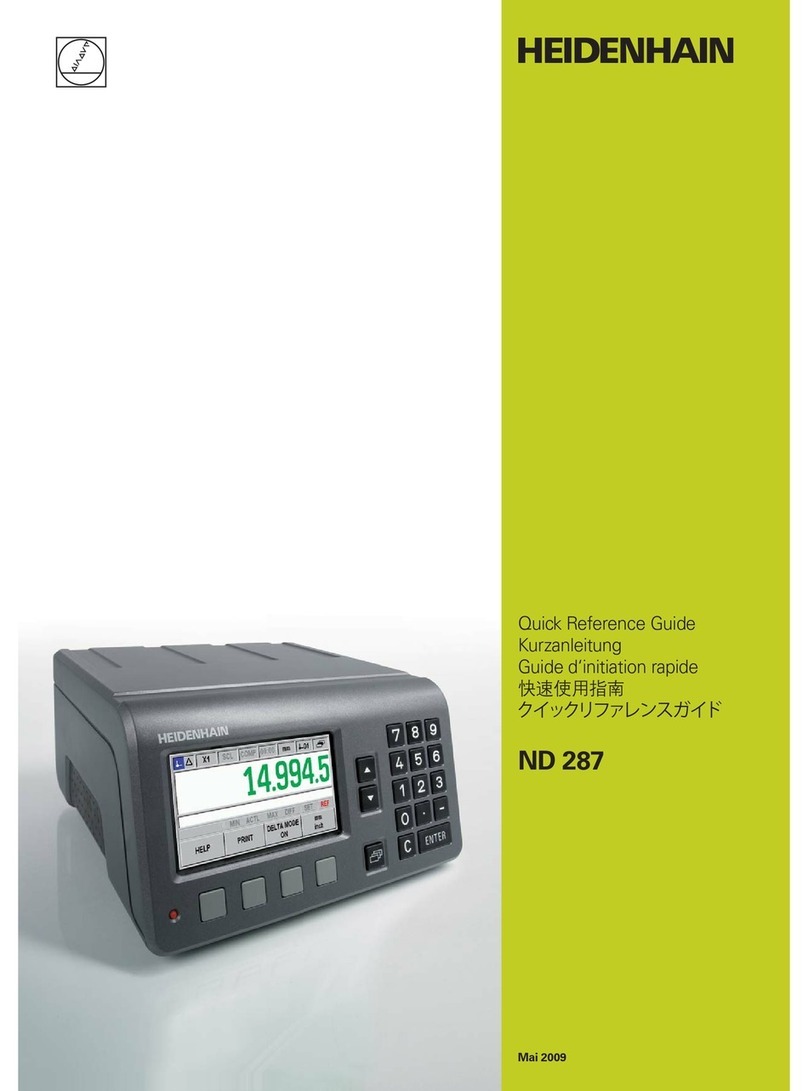
HEIDENHAIN
HEIDENHAIN ND 287 - GUIDE Quick reference guide
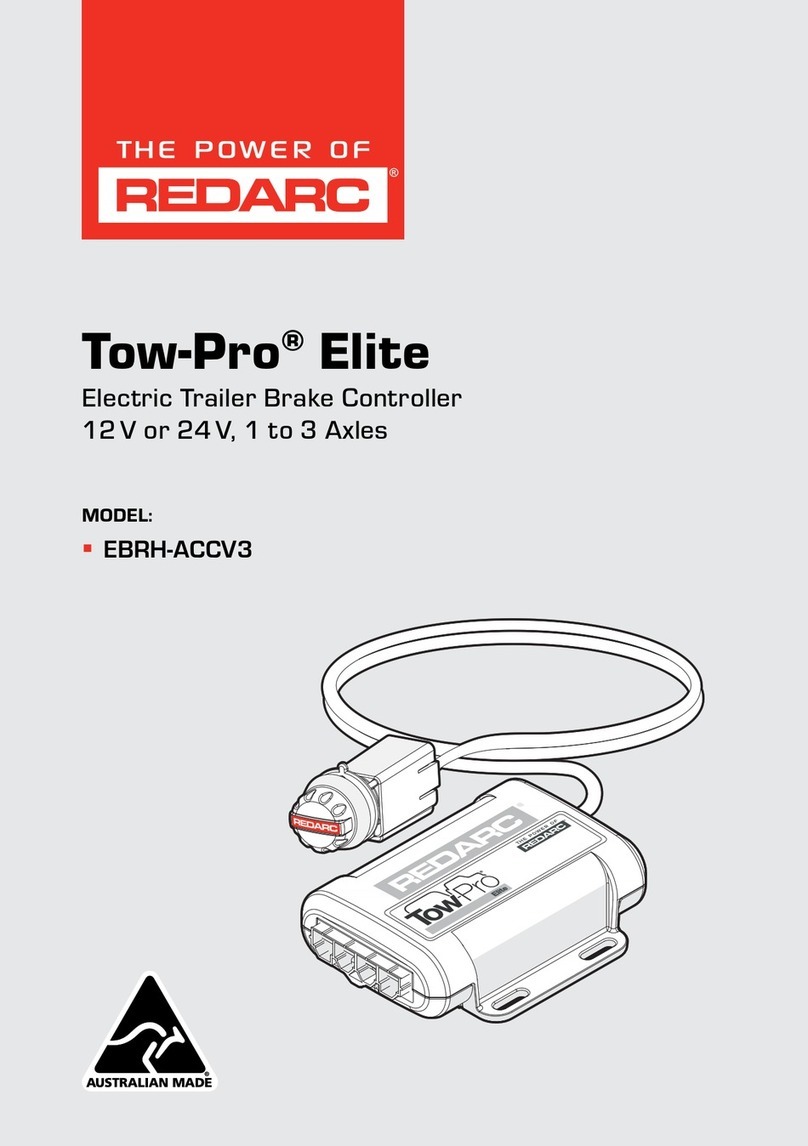
Redarc
Redarc Tow-Pro Elite instruction manual
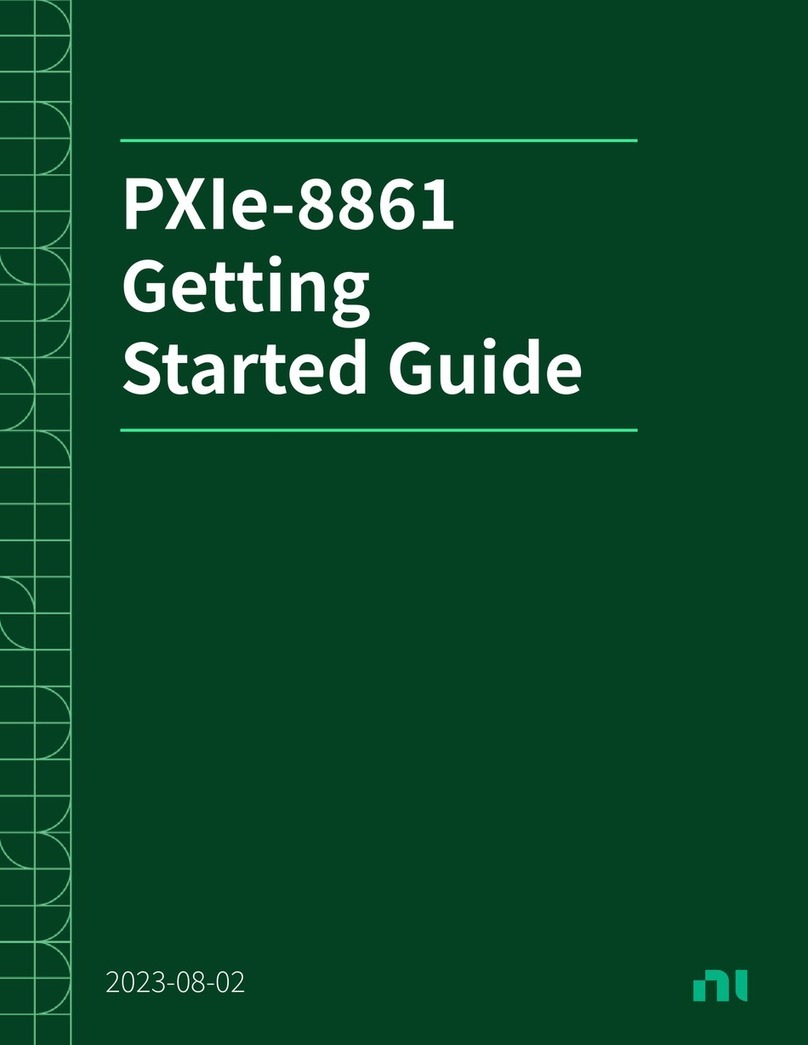
National Instruments
National Instruments PXIe-8861 Getting started guide

Endress+Hauser
Endress+Hauser Liquiline CM442R operating instructions
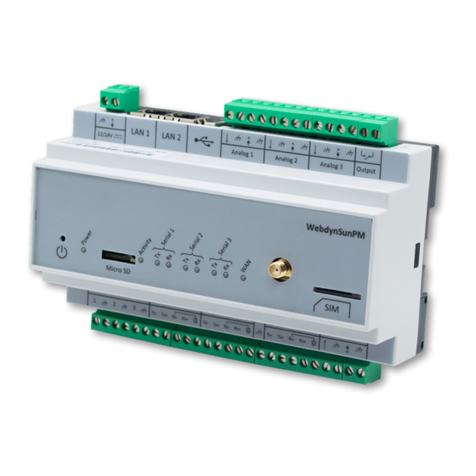
Flexitron
Flexitron Webdyn SunPM user manual
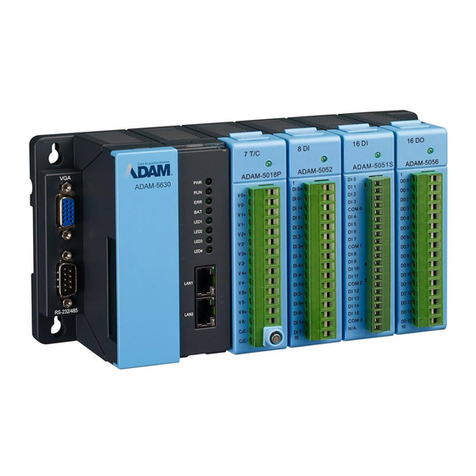
Advantech
Advantech ADAM-5630 Series user manual
